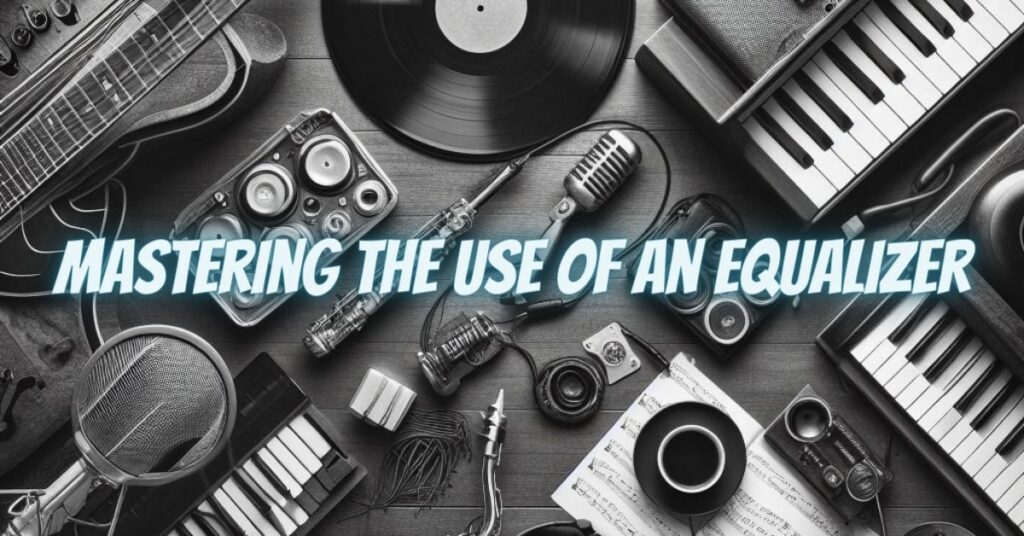Equalization, commonly referred to as EQ, is a fundamental tool in the world of audio production and sound engineering. It allows you to shape the tonal characteristics of audio signals, making them sound better and more balanced. Whether you’re a musician, sound engineer, or audio enthusiast, understanding how to use an equalizer is essential for achieving the desired sonic results. In this comprehensive guide, we will explore the basics of using an equalizer, including the different types of EQ, the role of frequency bands, and practical tips for effective equalization.
- Types of Equalizers
Before diving into the specifics of using an equalizer, it’s essential to familiarize yourself with the different types of EQ available:
a. Graphic Equalizer: Graphic EQs feature a set of faders or sliders, each representing a specific frequency band. You can adjust these sliders to boost or cut individual frequency ranges.
b. Parametric Equalizer: Parametric EQs offer more precise control. They allow you to adjust parameters such as frequency, bandwidth (Q), and gain for each band. This versatility makes parametric EQs suitable for fine-tuning specific frequencies.
c. Shelving Equalizer: Shelving EQs are primarily used to boost or cut frequencies above or below a specified frequency point. High-shelving and low-shelving EQs can be used to adjust the overall tonal balance.
d. Band-Pass and Band-Reject Filters: These EQs are used to create narrower or wider notches in the frequency spectrum, making them useful for surgically removing unwanted frequencies.
- Understanding Frequency Bands
An essential aspect of using an equalizer is understanding the frequency bands and their characteristics:
a. Bass Frequencies (20Hz – 250Hz): This range governs the low end of your audio, including kick drums, bass guitars, and the rumble in a movie soundtrack.
b. Low-Mid Frequencies (250Hz – 1kHz): These frequencies affect the warmth and body of your audio. Adjusting this range can impact the clarity of vocals and instruments like acoustic guitars.
c. Mid Frequencies (1kHz – 4kHz): The midrange is crucial for the definition and presence of instruments and vocals. Balancing this range can make your audio more articulate.
d. High-Mid Frequencies (4kHz – 8kHz): This range adds brightness and definition to your audio. It’s essential for vocals, snare drums, and cymbals.
e. High Frequencies (8kHz – 20kHz): These frequencies contribute to the airiness and sparkle in your audio, particularly noticeable with instruments like hi-hats and cymbals.
- Practical Tips for Using an Equalizer
Now that you have an understanding of EQ types and frequency bands, here are some practical tips for using an equalizer effectively:
a. Listen Actively: Train your ears to recognize the frequencies you want to adjust. A/B comparisons can help you identify issues and improvements.
b. Start with Cuts: Begin by reducing unwanted frequencies before boosting. This helps maintain a clean signal and reduces the risk of distortion.
c. Use Subtractive EQ: Try cutting frequencies before boosting. Removing undesirable elements can often yield better results than boosting good ones.
d. Broad vs. Narrow Q: Use a broad Q for gentle tonal adjustments and a narrow Q for surgically removing or enhancing specific frequencies.
e. Watch for Clipping: Be mindful of the signal level when boosting frequencies. Avoid excessive gain to prevent clipping and distortion.
f. Experiment and Trust Your Ears: EQ is as much an art as it is a science. Experiment with different settings and trust your ears to make the final judgment.
Using an equalizer effectively is a skill that can greatly enhance the quality of your audio recordings and mixes. By understanding the different types of EQs, the role of frequency bands, and following practical tips, you can shape the sound of your music or audio projects to achieve the desired results. Remember that practice, experimentation, and attentive listening are key to becoming proficient in the art of equalization.


